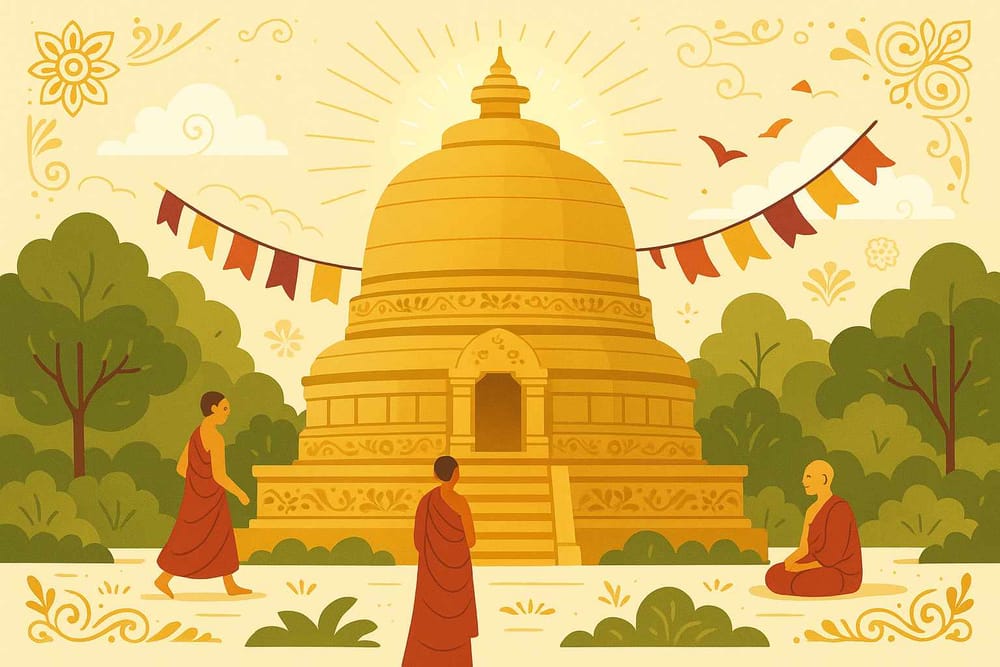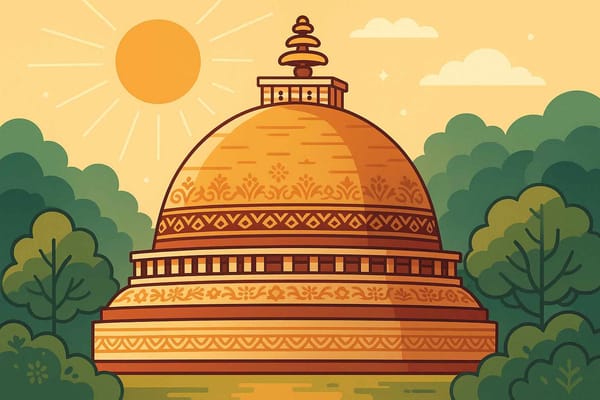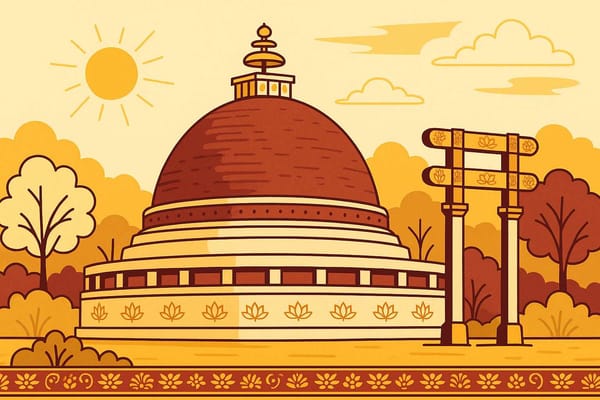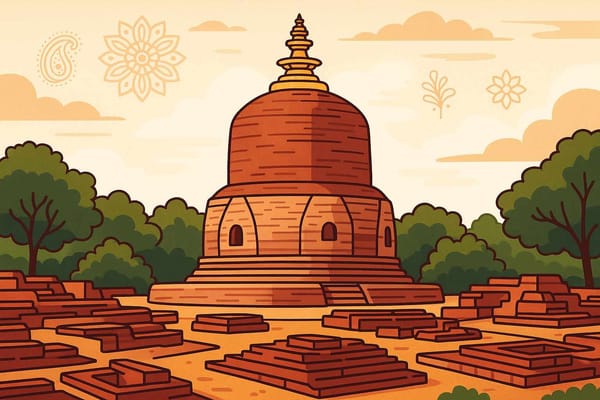
Dharmarajika Stupa: Uncover Historical Significance
Have you ever felt the presence of history so strongly that it feels like the ancient stones around you are whispering tales from a bygone era? There are places on Earth that hold the echoes of devotion, centuries of prayers, and the footsteps of countless seekers. One such monumental place is the Dharmarajika Stupa in Taxila, a silent yet powerful witness to the dawn of Buddhist heritage in our subcontinent.
Though today it stands across a political border in Pakistan, its story is deeply woven into the fabric of our shared Indic history. It’s a place that reminds us how faith and philosophy once flowed freely, shaping a culture of peace and wisdom. Let's journey back in time to explore this magnificent structure, a true marvel of devotion and architecture.
The Royal Decree: Ashoka's Vision in Stone
The story of the Dharmarajika Stupa begins with one of the most remarkable figures in our history, Emperor Ashoka the Great. In the 3rd century BCE, after the great Kalinga war, Ashoka’s heart transformed, and he dedicated his life to spreading the Buddha’s message of peace and Dharma. He earned the title 'Dharmaraja' or the 'Lord of Righteousness', and this stupa was one of his grandest projects.
So, what exactly is this monumental structure? The Dharmarajika Stupa is far more than just an ancient monument; it is a sacred structure built to house the holy relics of the Buddha himself, commemorating his *parinirvana* (final passing). It stands as one of the oldest and most significant Buddhist monuments in the world, marking one of the earliest efforts to create a centre for Buddhist worship in the Gandhara region.
An Architectural Marvel Whispering Spiritual Truths
When you look at the Dharmarajika Stupa, you are seeing the genius of Mauryan-era craftsmanship. The structure is a beautiful representation of Buddhist cosmology.
- The Hemispherical Dome (Anda): The massive dome represents the infinite universe, vast and boundless. It was built with precision, using sturdy brick and stone, designed to last for millennia.
- The Sacred Core: At its very heart, the stupa is believed to enshrine a relic chamber. When the site was excavated by Sir John Marshall between 1912 and 1916, incredible artifacts were discovered, including a miniature gold casket, beads, and a steatite vase, pointing to the sacred treasures held within.
Its grand design and spiritual purpose turned Taxila into a major religious hub. The complex grew to include a monastery, fulfilling both the spiritual and communal needs of the monks and devotees who travelled from far and wide to be here. It’s no wonder that Taxila, with this stupa at its core, is now a UNESCO World Heritage Site.
A Beacon of Faith and Shared Heritage
The spiritual energy of the Dharmarajika Stupa is not confined to its physical structure. It is a symbol of peace, harmony, and the timeless teachings of the Buddha. For centuries, it has been a sacred pilgrimage site, a place where people came to connect with the essence of the Dharma.
A truly touching part of its history occurred in 1917, when some of the sacred relics found here were presented to the Buddhists of Sri Lanka. They are now enshrined in the revered Temple of the Tooth Relic in Kandy, creating an unbreakable spiritual bond that transcends time and geography. It reminds us that the Buddha's teachings are a gift to all of humanity.
Many wonder if this historic site can still be visited. Yes, the Dharmarajika Stupa is a protected part of the Taxila archaeological site in Pakistan and remains open to visitors who wish to witness this profound piece of our shared history and architectural grandeur.
Bhaktilipi: Your Guide to India’s Spiritual Roots
At Bhaktilipi, we believe that understanding our past is key to enriching our present. The story of the Dharmarajika Stupa is a powerful reminder of our deep spiritual and cultural heritage. We are dedicated to bringing you such timeless stories and devotional literature, preserving them in a way that connects with today's generation.
Exploring such magnificent historical sites, even through stories, can be a deeply spiritual experience. It helps us understand the roots of our traditions and the values they teach. If you appreciate the beauty of our ancient heritage, just imagine having a piece of that tradition in your own home with our authentic pooja essentials.
Stay connected with our community and explore more enriching content:
A Timeless Legacy of Peace
The Dharmarajika Stupa is more than an archaeological wonder; it is a living symbol of a time when the ideals of compassion and mindfulness were championed by an emperor. It stands today as a testament to the enduring power of faith to inspire magnificent art, unite people, and spread a message of peace across the world.
As we learn about such places, we don't just learn about history; we connect with a spiritual legacy that continues to offer guidance and solace. The stupa reminds us that the path to inner peace is timeless, and its light continues to shine brightly for all who seek it.
A passionate group of people dedicated to preserving India's knowledge of Dharma, Karma, and Bhakti for ourselves and the world 🙏.
Comments
Related in

Dharmarajika Stupa - A Time Traveler's Exploration
Some places in the world don't just exist in space and time; they hold time within them. Standing before the great Dharmarajika Stupa in Taxila, Pakistan, you can feel the centuries fold into one another. It's as if the air itself is thick with ancient chants

Dharmarajika Stupa: Journey Through History
Some places in the world feel like they hold time within their very stones. Standing before them, you can almost hear the whispers of centuries past, the footsteps of pilgrims, and the chants of monks. The great Dharmarajika Stupa in Taxila is one such place. It’s more than just

The Mystical Aura of Dharmarajika- Time Reveals its Secrets
Some places in the world feel like they hold time within their very stones. They are not just historical sites; they are living testaments to faith, art, and human devotion. Imagine standing in the ancient city of Taxila, in present-day Pakistan, where the air itself seems to hum with stories
